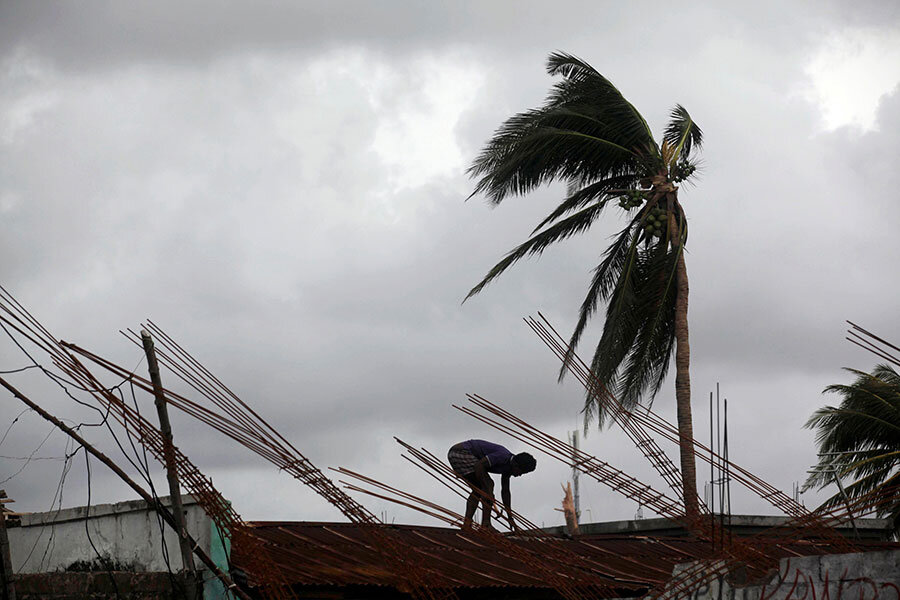Two ways Haiti is coping after hurricane Matthew
Loading...
How does a poor nation handle a big natural disaster? It gets a lot of outside help. As hurricane Matthew bore down on Haiti this week, private aid groups and government agencies from the United Nations to the United States Navy prepared to send aid.
But Haitians also mobilized. At least two grass-roots efforts, taking lessons from the 2010 earthquake that devastated the Caribbean nation, were under way.
Before the storm hit, groups of women in northern Haiti moved through rural towns to spread tips on how to prepare for the storm. The ideas were basic: don’t throw trash in the street, because it can keep water from circulating; secure any legal documents; find a safe place for livestock.
The volunteers are coordinated by Oxfam in conjunction with its partners and government agencies. 'Oxfam activated the crisis cell in conjunction with our contingency plan," a spokeswoman writes in an e-mail. The private-aid agency's staff on the ground also coordinated efforts with Haiti's Directorate of Civil Protection, the government agency that responds to natural disasters. "That allowed us to alert our partners ahead of the storm, so that they could notify their respective areas."
The hurricane, which made landfall at 7 a.m. Tuesday, was the most powerful to hit Haiti in 50 years. The nation’s southwestern peninsula, which lay in the direct path of the storm, was the hardest hit, knocking out communications and a key highway bridge. Government and aid organizations are just beginning to determine the extent of the damage.
But in places, locals have been able to use social media to post videos, pictures, and reports. In the aftermath of the 2010 earthquake, for example, volunteers at Tufts University’s Fletcher School combined crisis-mapping software called Ushahidi with social media posts and media reports to alert aid organizations to areas needing the most help. In one dramatic instance, a text from two women and a 7-year-old alerted a US rescue team, which pulled them from the rubble of a collapsed supermarket.
Now, six years later, Haitians themselves – specifically, the Rotary Club of Port-au-Prince’s ritzy suburb, Petionville – are using the software to track reports of need. For well-regarded charities involved in helping Haiti post-hurricane, see Charity Navigator’s listings.
[Editor's note: This post has been updated.]








